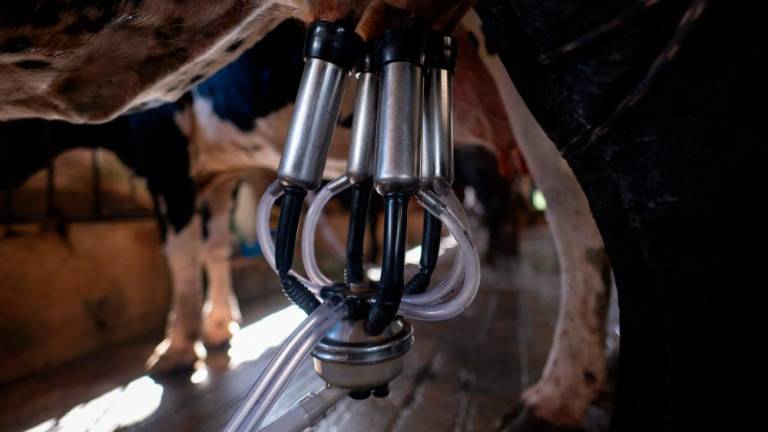TWO weeks ago I wrote that avoiding a cliff fall resulting from what was looking like a recession would depend on the new government and the members of Parliament reconvening in May. Unfortunately that luxury of two months grace is no longer available.
Despite a relief rally in world markets and our own due to the adoption of a massive and historically unprecedented stimulus by the United States, the jury of expert opinion is that the economic carnage in the US and global economy is still at an early stage.
Worse damage is now expected with the IMF chief stating that 2020 could see a recession worse than the global financial crisis and the OECD secretary-general warning that the global economy will take years to recover.
The news from China, which has contained the first wave of the Covid-19 pandemic spread and in which hopes have been pinned on a V-shaped recovery, is also looking bad. After surveying thousands of Chinese firms, China Beige Book International (CBB) suggested that “a 10-11% GDP contraction in the first quarter is not unreasonable”. More ominously the report noted that “investors may therefore be severely overestimating the extent of China’s recovery and hence the extent to which China can cushion a global downturn”.
In the US, while hard figures are not yet available, all observers including President Donald Trump’s economic cheerleaders now agree that the country is experiencing one of its sharpest economic contractions in its history. Estimates also point to millions of Americans already losing their jobs at a pace that exceeds job losses in the worst weeks of the Great Recession.
Impact on the Malaysian economy
Back here, now that the movement control order (MCO) will be in effect until mid-April, MIER’s economic impact analysis of the Covid-19 outbreak has projected that the number of job losses could be an estimated 2.4 million, of which 67% are unskilled workers. The Association of SME’s has estimated that up to one million Malaysians could lose their jobs if 10% of small and medium enterprises in the country go bust in the coming months. This does not take into account our service industry which employs 2 million workers in the sectors most affected by the pandemic – retail, restaurants, tourist services, hotels, cinemas, entertainment centres, sports and recreation outlets and more are all closed for business, possibly for months to come.
My own rough estimate is that if we assume 10% of B40 and lower-middle-class households in the country are severely impacted in their earnings, we may have as many as 5 million people that will require some form of assistance. This is a game changer of frightening proportions.
For now the emphasis of think tanks and economists on how to offset the crippling socio-economic effects of the pandemic has focused on the size of the financial stimulus package needed to assist individuals and businesses.
Where the money for this financial stimulus can come from and who it should go towards needs to be an important part of this discussion. On the latter question, we should look at how other countries are dealing with the crisis by providing a safety net for employees and employers. The UK government, for example, has moved to fund 80% of the wages of workers so that they continue to be employed although prevented from working by the MCO. Such a measure can go some way in helping prevent widespread bankruptcies and job losses which the country can ill afford.
Also necessary is to shorten the period of the MCO for some manufacturing and industrial businesses in critical sub-sectors to resume production when the health risks have been assessed as minimal. Singapore, South Korea and Taiwan provide templates that this is possible and important to reinflating the economy.
As to the former question, the general consensus of guidance for our policymakers is not to be overly concerned about the debt ceiling in the present circumstances. The government should go and borrow given that market interest rates are at an all time low. Furthermore, the international financial institutions are flush with money and can assist countries with finance for sound programmes. The interest costs of these loans will not stress the fiscal picture in the short run and could be dealt with once recovery sets in.
A second approach is to also look at financial self-reliance alongside the borrowing option to save jobs and assist business and the most vulnerable households.
Case for across the board government budget cutback
One uncomplicated measure that can help provide the life support funds immediately needed is the introduction of an across the board cutback in the budgets of government ministries and agencies at national, state and local levels.
If adopted – and there is no reason why there will be opposition from Pakatan Harapan to the proposal – this measure will provide savings for a special fund providing relief to key groups whose loss of business, jobs and incomes has pushed them into bankruptcy, insolvency or penury as well as sectors which are important to the national interest.
How much of a cut should be effected without seriously undermining the efficiency and efficacy of government can be debated. A cut of 15% in the operating and development expenditure of all ministries – with the exception of the Ministry of Health and a few other key social welfare agencies – would bring about a savings of RM45 billion from the RM297 billion allocation for the federal government’s budget for 2020.
While this is likely to be seen as a contentious approach – in many macroeconomic models austerity policies generally increase unemployment as government spending falls – the measure can save jobs while holding employment in the public sector steady. Its implementation will also help to preserve consumer spending, which MIER has estimated as likely to fall by 11% during the year, and in this way provide a jump start to return the economy to operating normally.
What is being proposed, it should be emphasised, is not the traditional austerity programme to lower budget deficits and avoid a debt crisis. It is not one intended to reduce our social safety net nor will it impact low-income earners as is the case with conventional austerity measures. On the plus side it may in fact bring about a leaner and more efficient government, shorn of some of the fat which has been a cause for concern for a long time. Finally it can lead to higher productivity from fund utilisation.
There is one indication that this measure may be welcomed by a majority of the civil service workers which the cutback proposal may appear to be most disadvantaged by. Recently 10,000 civil servants in Pahang agreed to donate a portion of their salary to aid Malaysians whose livelihoods have been badly affected by the Covid-19 pandemic.
According to Pahang State Secretary Datuk Seri Dr Sallehuddin Ishak, the civil servants’ decision to contribute to the Pahang Covid-19 fund was reached after they were made aware of the hardship faced by hawkers, food truck operators, taxi drivers and others after their livelihoods were badly hit by the virus and the movement control order.
“This is a small gesture by the civil servants in Pahang to display their solidarity with those facing difficulties due to loss of income. Civil servants of all ranks are doing it voluntarily and according to their capabilities,” he said.
The federal government should look into how it can build upon this proposal to help save the national economy in this acute crisis.
Lim Teck Ghee’s Another Take is aimed at demystifying social orthodoxy. Comments: letters@thesundaily.com














